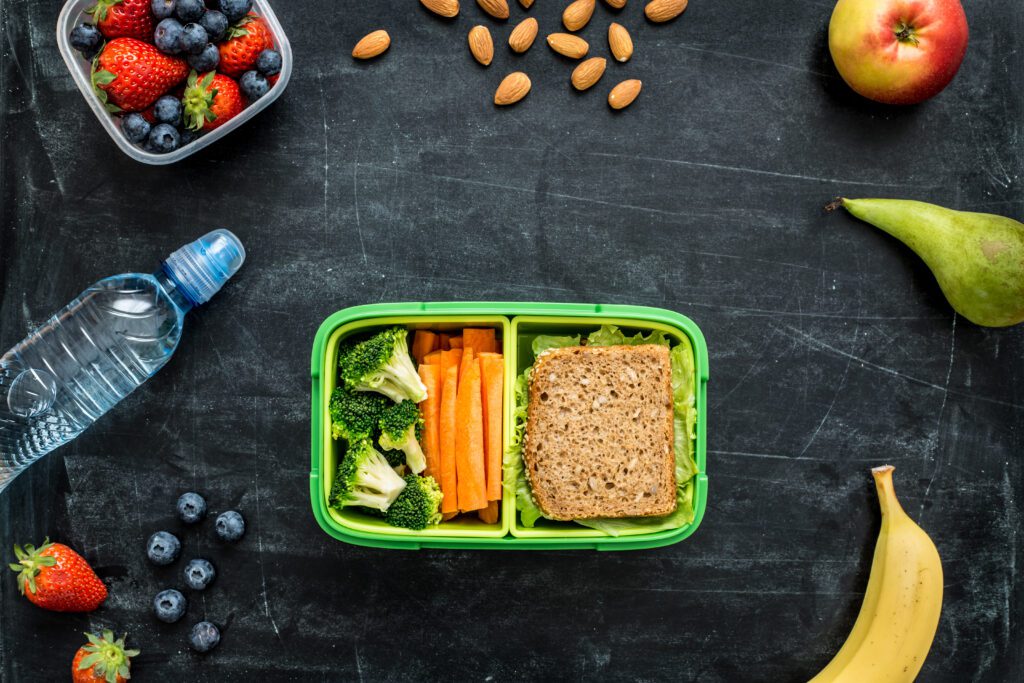Fiber can help control your blood sugars, clean out your GI tract, and keep you fuller longer. Most adults need around 25 grams per day! Are you getting enough fiber?!

Are you getting enough Fiber?
One of the easiest ways to get fiber into your diet is to 1) make sure you are making half your grains whole grains and 2) are getting fruits and veggies in at every meal. Chances are, if more than half your grains are NOT whole, or you are having a hard time getting in enough fruits and veggies, you probably are not eating enough.
Make Half your Grains Whole – Whole Grains still contain all three of the components of the original grain: bran, germ, and endosperm. Refined grains go through a process which removes the bran and germ providing a smoother texture and extending shelf-life. But this process removes the fiber, B vitamins, and iron that our bodies need. Some refined grain products are “Enriched” meaning they have some of the B Vitamins and iron added back in. However, fiber is rarely added back.1
When looking for whole grains, turn the package round and read the ingredients. If the word “whole” is not found before the name of the grain, it is NOT a whole grain! Sometime products also have a large W label on the package front indicating the product contains whole grains. Enriched grain products are an okay second option if a whole grain option isn’t available.
Fruits and Vegetables – Minimally processed whole fruits and vegetables are also excellent sources of fiber, vitamins, and minerals. However, the more a food is processed, the less fiber our bodies can get out of it. Some foods need to be processed in order for us to eat or enjoy them. Steaming, sautéing, and roasting foods are all ways we can process fruits and vegetables in a healthy way. Eating whole fruits and veggies with every meal will help you reach your goals.
How to Add More Fiber into your Diet
Breakfast – Switch to a whole grain bread and add avocado. Try oatmeal with berries and nuts. Look for cereals that are whole grain and add your favorite fruit.
Lunch – Try a salad with lots of veggies some seeds and lean protein!
Snack – Pick up some whole fruit – apples, oranges, bananas! Or nuts – almonds, peanuts, pecans! (Try to find unsalted varieties of nuts.)
Dinner – Add in peas, beans, or legumes!
Health Benefits
Adding more fiber to your diet will positively impact your health and many ways! It can help you control your blood sugars better by helping your body digest foods more slowly preventing blood sugar spikes. And, it can help protect your heart by lowering your cholesterol levels. Your GI tract will also thank you as fiber acts as a natural cleanser and feeds good bacteria. Finally, fiber can help with weight management. Since it can’t be digested, fiber makes you feel fuller longer!2 It’s a win-win!
References:
Want to learn more about what the SAHRC has to offer?! Check out our other ¡Viva Bien! Blog topics!
